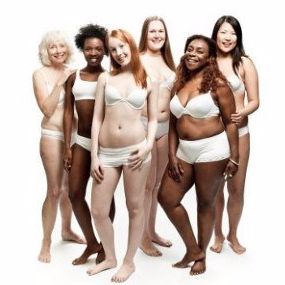 I’ve been enjoying Tim Caulfield’s Is Gwyneth Paltrow Wrong About Everything? Caulfield is a University of Alberta guy — gives me a rarely felt twinge of alumni pride, actually. Maybe I’m proud because he wrote a well researched book that is really easy and fun to read. Gwyneth is his poster girl for all the weird intersections between celebrity culture and our endless quests to improve ourselves — through diet and alternative medicine for example — or to achieve “fame.” (On the latter point, some of his stats on your odds of making it big in music or sports are truly alarming.) The overall point of the book is that celebrity culture has a symbiotic relationship with a lot of the human qualities that we can all be, shall we say, less proud of: weakness of will, narcissism, driving insecurities, self-delusion, and social comparison.
I’ve been enjoying Tim Caulfield’s Is Gwyneth Paltrow Wrong About Everything? Caulfield is a University of Alberta guy — gives me a rarely felt twinge of alumni pride, actually. Maybe I’m proud because he wrote a well researched book that is really easy and fun to read. Gwyneth is his poster girl for all the weird intersections between celebrity culture and our endless quests to improve ourselves — through diet and alternative medicine for example — or to achieve “fame.” (On the latter point, some of his stats on your odds of making it big in music or sports are truly alarming.) The overall point of the book is that celebrity culture has a symbiotic relationship with a lot of the human qualities that we can all be, shall we say, less proud of: weakness of will, narcissism, driving insecurities, self-delusion, and social comparison.
At any rate, read the book. It’s great — truly educational and entertaining, which is a rare achievement on the part of an academic. What I have been dwelling on are the couple of chapters on how celebrity culture shapes body image. Caulfield reviews studies that suggest that social media and reality TV, which have intensified celebrity culture, have also “intensified our compulsion to make social comparisons to unrealistic images.”[1] The desire to be like a celebrity, or to become a celebrity, is at play when people — women but more and more men as well — come to plastic surgeons, sometimes directly asking for the offending body parts to be refashioned along the lines of “Pamela Anderson’s breasts,” or “J-Lo’s butt.” Most disturbing, I think, is the creepy and porn-inspired trend in labioplasty to “make the vulva appear more youthful.” Shudder. Caulfield discusses the losing game of comparing ourselves to hopelessly skewed, narrow, and unrealistic standards of beauty.
These sections of the book have me extra appreciating the locker room at my gym. Locker rooms comfort me, and not just because the gym is my second home. They comfort me because they are the anti-thesis of celebrity-inspired drive to physical perfection the Caulfield describes in his book. Locker rooms are full of real life bodies of all ages. My gym has sex segregated whirlpools and saunas, so ladies tend to let it all hang out. Some wear bathing suits, but many do not. So, on any given day this space will be a parade of bodies of all different shapes and sizes. There are beautiful youthful bodies of women who, ironically, are probably the least secure about their bodies because of their young age. There are athletic bodies, and soft bodies. There is cellulite; there are surgical scars, C-section scars, and stretch marks.
Seeing all this difference makes me love people, and love that we are all there and each, in our own ways, taking care of our imperfect bodies as best we can. The friendly young woman I chat with in the steam room I surmise is on the autism spectrum, based on her halting speech and conversation. She has the beautiful, strong back and shoulders of a swimmer. Two women are naked, laughing about a recent holiday, and one has one breast. She’s a survivor, like all of the energetic women of the Breast Friends Dragon Boat Racing Team who annually descend upon my old gym in Edmonton, filling the locker room with chatter and friendship. I miss seeing them. In a full-length mirror, I see the body that lets me cycle and run. I see the stretch marks on my belly. Behind that abdomen I can never quite get to be flat, no matter how much core work I do, grew two beautiful daughters.
I know that my locker room experiences over the years have helped me to deeply love and appreciate bodies in non-sexual ways and non-aesthetic ways. Particularly because I’m a fitness nut, I think of bodies primarily with gratitude for what they can do for us. So, I can’t help but wonder if the studies Caulfield cites are right: that what you are constantly exposed to is bound to shape your feelings about your body. If that steady stream is comprised of madly unrealistic images of human bodies and faces, how could the outcome be anything but chronic dissatisfaction with oneself?
And what a profound contrast it is to be surrounded, almost daily, by full-on naked, imperfect, varied and vibrant beings. When I am at my gym, I wonder if the kind of regular exposure to real bodies doing mundane things might help more people — especially vulnerable young people — to find a healthier body image, and maybe even a sense of groundedness in a world of runaway media saturation that alienates us from ourselves and others.
[1] p.163. Caulfield does note that these kinds of studies can only speculate on causal relationships, but collectively, they do point to a relationship.
Advertisements Share this:




